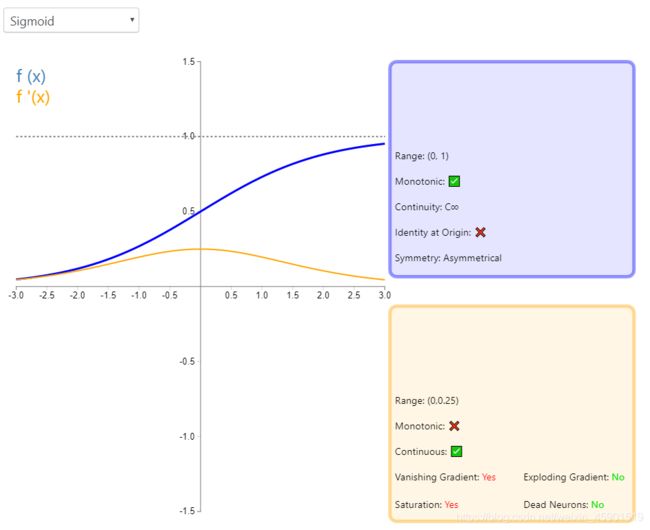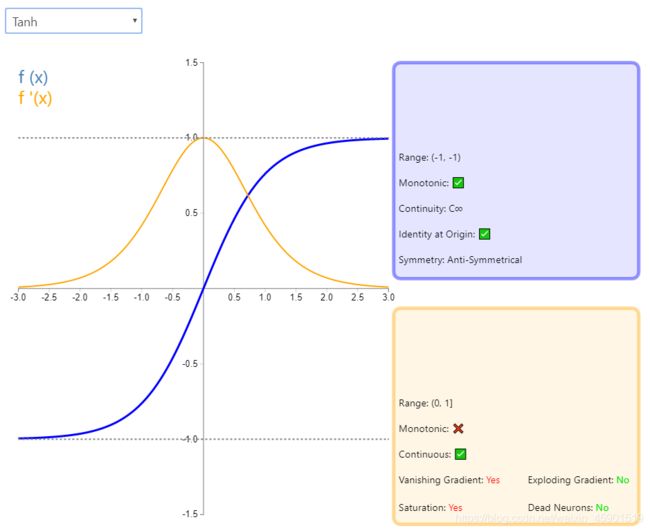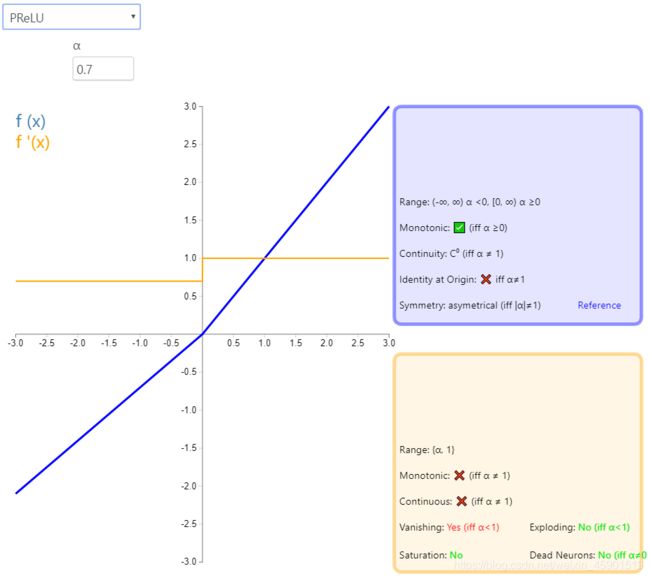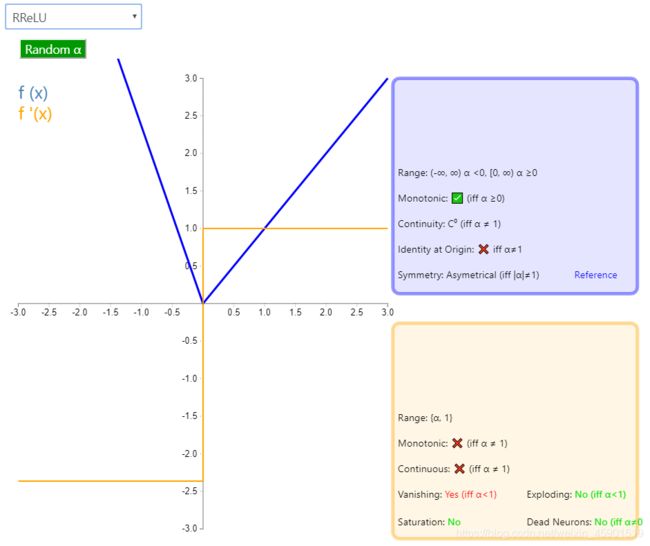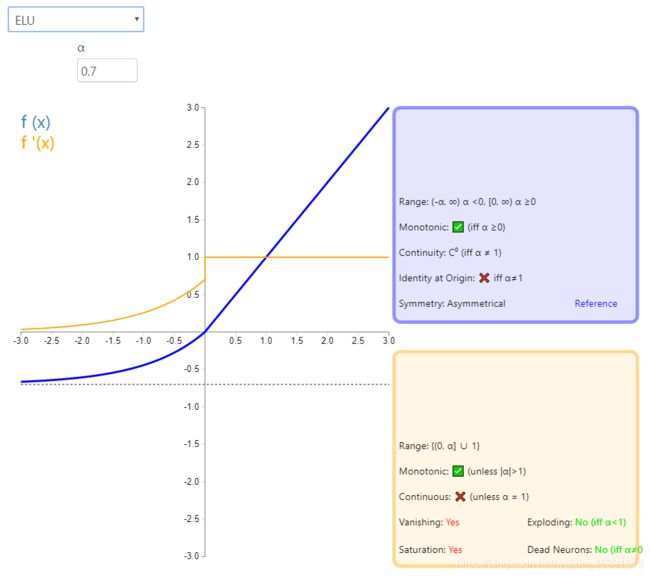深度学习中的激活函数总结以及pytorch实现
目录
- 一、简介
- 二、常用激活函数
- 1、ReLU
- 2、Sigmoid
- 3、Tanh
- 4、LeakyReLU
- 5、PReLU
- 6、RReLU
- 7、ELU
- 三、参考文献
一、简介
在神经网络中,激活函数决定一个节点从一组给定输入的输出,而非线性激活函数允许网络复制复杂的非线性行为。由于大多数神经网络使用某种形式的梯度下降进行优化,激活函数必须是可微的(或者至少是几乎完全可微的)。此外,复杂的激活函数可能会产生关于渐变消失和爆炸的问题。因此,神经网络倾向于使用一些选定的激活函数(identity, sigmoid, ReLU和它们的变量)。
下面我就结合pytorch官方文档.和 这个可视化网页.来看一些常见的激活函数,这个可视化激活函数网页很形象。先附上一些常用的激活函数,以便快速查看。

二、常用激活函数
说明:图基本能说明一切,需要注意的是它的导数。pytorch中也介绍的比较详细,可查看pytorch官方文档看看参数的使用。
1、ReLU
>>> import torch
>>> import torch.nn as nn
>>> m = nn.ReLU()
>>> input = torch.randn(2)
>>> output = m(input)
>>> output
tensor([0.0000, 1.2999])
2、Sigmoid
>>> import torch
>>> import torch.nn as nn
>>> m = nn.Sigmoid()
>>> input = torch.randn(2)
>>> output = m(input)
>>> output
tensor([0.8888, 0.3325])
3、Tanh
>>> import torch
>>> import torch.nn as nn
>>> m = nn.Tanh()
>>> input = torch.randn(2)
>>> output = m(input)
>>> output
tensor([0.5014, 0.9791])
4、LeakyReLU
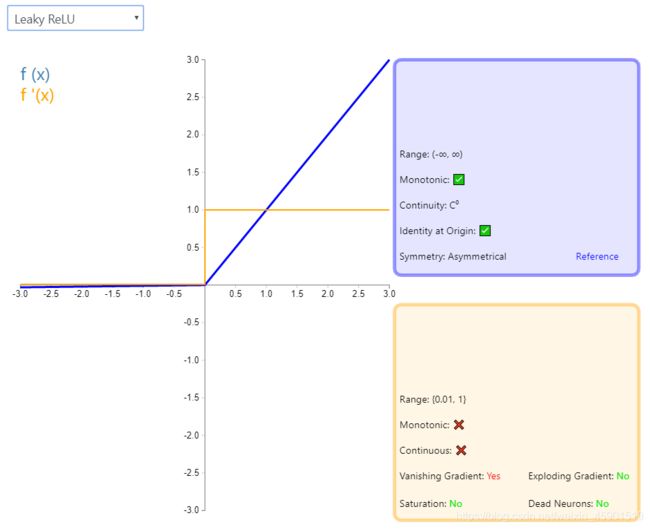
注意:LeakyReLU对负值输入有一个非常小的斜率。由于导数总是不为零,这可以减轻对死亡神经元的影响,从而允许基于梯度的学习发生(无论多慢)。
>>> import torch
>>> import torch.nn as nn
>>> m = nn.LeakyReLU(0.1)
>>> input = torch.randn(2)
>>> output = m(input)
>>> output
tensor([ 0.5794, -0.0122])
5、PReLU
>>> import torch
>>> import torch.nn as nn
>>> m = nn.PReLU()
>>> input = torch.randn(2)
>>> output = m(input)
>>> output
tensor([-0.5252, -0.2924], grad_fn=<PreluBackward>)
6、RReLU
>>> import torch
>>> import torch.nn as nn
>>> m = nn.RReLU(0.1, 0.3)
>>> input = torch.randn(2)
>>> output = m(input)
>>> output
tensor([-0.0875, -0.2063])
7、ELU
>>> import torch
>>> import torch.nn as nn
>>> m = nn.ELU()
>>> input = torch.randn(2)
>>> output = m(input)
>>> output
tensor([-0.0666, 0.9408])
三、参考文献
1: https://dashee87.github.io/deep%20learning/visualising-activation-functions-in-neural-networks/.
2: https://pytorch.org/docs/stable/nn.html#non-linear-activations-weighted-sum-nonlinearity.
3: http://rasbt.github.io/mlxtend/user_guide/general_concepts/activation-functions/#activation-functions-for-artificial-neural-networks.


